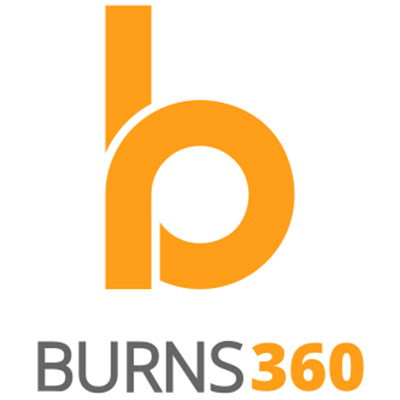
What’s the Problem with Localization Marketing? Part Two of Three: Engaging Potential Buyers
President
Burns360
Buckle up, readers. This is going to be a long one, but stick with me and you just might think it’s worth it!
Five years ago, I served on a marketing panel at LocWorld Seattle and discussed localization marketing and strategic branding.
I was excited about my topic. Others? Not so much.
Everyone else on the panel talked about how to close more sales instead of marketing per se, and the difference in audience participation was glaring. Looking back on it, I can easily see why.
In the language services industry, direct selling has always been king—the primary (and sometimes the only) way providers get new business. Meanwhile, marketing has usually been stuck in the “nice to have” category.
But that was yesterday. In the B2B space, marketing’s role is increasingly critical. Today, smart marketing strategies can literally make the difference between winning and losing a sale. Yes, even in the language industry.
Machine Translation Is Changing the Rules of Engagement. So Is Marketing Technology
It’s almost impossible to find an article on localization today that doesn’t mention machine translation in one way or another. But machine translation is just one way technology is changing the language-services industry.
The entire B2B buying process has undergone a shift over the past few years, and guess what? It’s never going to go back to the way it was before.
Marketing tech innovations and big data are the reasons why. They’ve created a new paradigm that has changed the traditional B2B marketing process in six significant ways.
- In the past, the sales team was the primary customer for marketing. Now the customer is the customer.
- Marketing’s focus used to be on tactics. Now it’s on strategy.
- Marketing has historically measured activity. Now it can measure revenue and business impact.
- In the past, sales owned the buying process. Today, buyers own the buying process.
- Marketing used to be campaign-driven. Now it’s more program- and conversion-driven.
- For the most part, marketing was a one-way communication process. Now it’s an ongoing, two-way dialogue.
What’s more, according to the APSIS Customer Journey Report, only 1% of sales are generated today by cold calling. And the analyst firm, CEB/Gartner, says that 57% of the buyer’s decision-making process is now done before making the very first contact with a potential seller.
Still with me? One more statistic.
According to CEB/Gartner, the average number of decision-makers in a standard B2B purchase has risen to 6.8 people. We’re now in a consensus buying age. This means at least some (and probably most) people on your buying committee have no idea of how to evaluate the value and ROI of any multilingual solution.
That’s why smart marketing strategies will help you close more sales.
Reach, Frequency and Efficiency: The Keys to Success in Localization Marketing
Localization is the only industry I’ve ever worked in that has virtually no trade media, and gets even less coverage from mainstream publications (needless to say, not every newspaper has a localization beat reporter.) Except for MULTILINGUAL, Slator, the Globally Speaking podcast, and a few trade association publications, there are very few resources for industry news.
This puts an unusual twist on how to market within the language industry itself. Effective marketing is always a combination of reach and frequency, as well as a trade-off between the two. For example, the global edition of the Wall Street Journal has a print circulation of around 1.5 million issues—an outstanding reach—but the cost of a one-time, full-color, full-page ad is over $400,000.
Most marketers say you need around four impressions before you start to make a real impact on brand awareness, so it doesn’t take Einstein to figure out how fast advertising costs can add up when you combine frequency with very high levels of reach.
The good news is that frequency always carries more weight than reach when it comes to building brand awareness. The more potential buyers see your name, the more likely they are to consider your offerings. Which is why marketing communications should play a pivotal role in your business development strategies.
How to Achieve Marketing Frequency in the Language Industry
Hubspot, the inbound marketing and sales powerhouse, uses a term I wish I would have coined. The term is SMARKETING, which refers to an approach that combines marketing automation with direct selling.
In my opinion, it’s the smartest way to achieve cost-effective frequency in the language category. By no means can you win localization contracts of any decent size without direct sales, and increasingly, the opposite is also true. Potential clients want to know more about your company beyond what your sales team has to say.
Because the language business is such a specialized segment, SMARKETING can yield tangible results without costing you the national debt. A few SMARKETING frequency tactics include:
- High visibility at key industry events, like LocWorld
- Proactive Involvement in one or more associations, like GALA, ELIA and Women in Localization
- Writing a minimum of two blogs a month
- Sharing valuable content, like your blogs, over social media
- Regularly posting comments and content in key industry social media groups, like the following six examples on LinkedIn:
- Language Network
- Localization Professional
- Professional Translators and Interpreters
- Localization and Globalization Fusion Society
- Certified Translation Professional Group
- Translation Automation
- Sending news announcements to MULTILINGUAL, Slator, and other targeted news outlets
- And finally, exploring advertising and other marketing options to build brand awareness. Because the language industry has very few media resources, you can make a great impact even with a small ad budget.
How to Achieve Marketing Reach Beyond the Language Industry
Here is where your marketing challenges get trickier. It doesn’t make sense to only market to people with localization knowledge and expertise, but it makes even less sense to spend money where it’s not going to move the marker.
Renato Beninatto, founder of the language industry research and analyst firm, Nimdzi, often points out that translation and localization purchases are not C-level buying decisions. But in a world of consensus buying committees, that doesn’t mean language-related companies can afford to ignore other key stakeholders altogether.
This is why reaching beyond the language industry is also a viable marketing technique. Here are a few ways to do it without breaking the bank.
- If you’re a large enterprise or LSP that has enough news to merit a proactive PR campaign, you can reach multiple markets through media coverage—including Tier One business press, like the WSJ, Financial Times, Bloomberg, and so on—without spending a penny on advertising.
- Regardless of what size your firm might be, you can also attract new customers by working with organizations and media whose targets are interested in localization, but need to learn more about it. Examples include:
- The Content Marketing Institute (CMI)
- E-Content Magazine
- cmo.com
- International Business Times
- Multichannel Merchant
- And, of course, many more.
- Finally, you can broaden your reach cost-effectively by promoting your brand through trade media and associations that cater to your specific target markets. If, for example, you specialize in medical and healthcare translations, there are a number of options you can choose from—all of which have the potential to reach decision-makers beyond the localization team. The same is true for virtually every other industry.
These are just a few ways marketing can add more power to your sales engine. In my third and final blog in this series, I’ll discuss how to develop and promote your brand’s key differentiators and value proposition.


